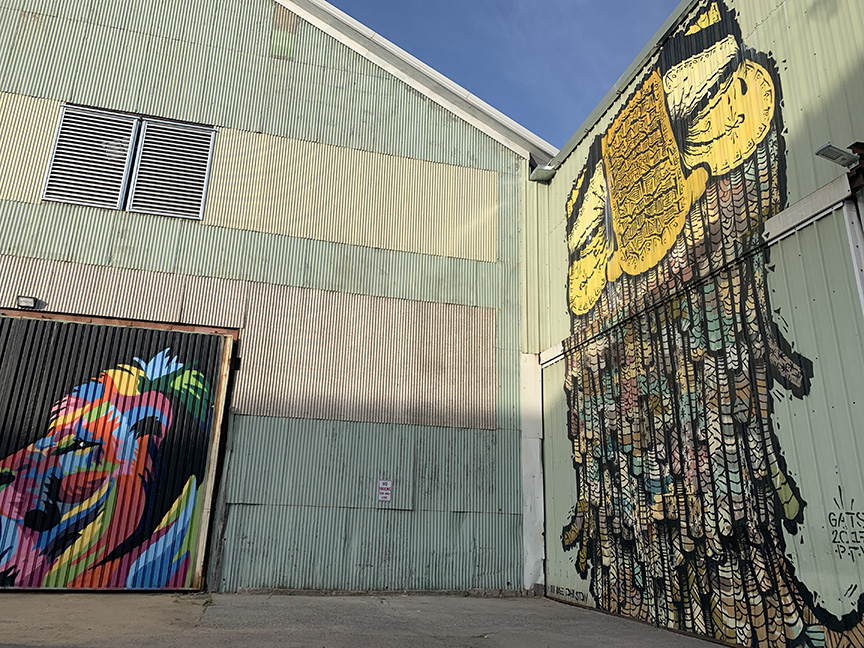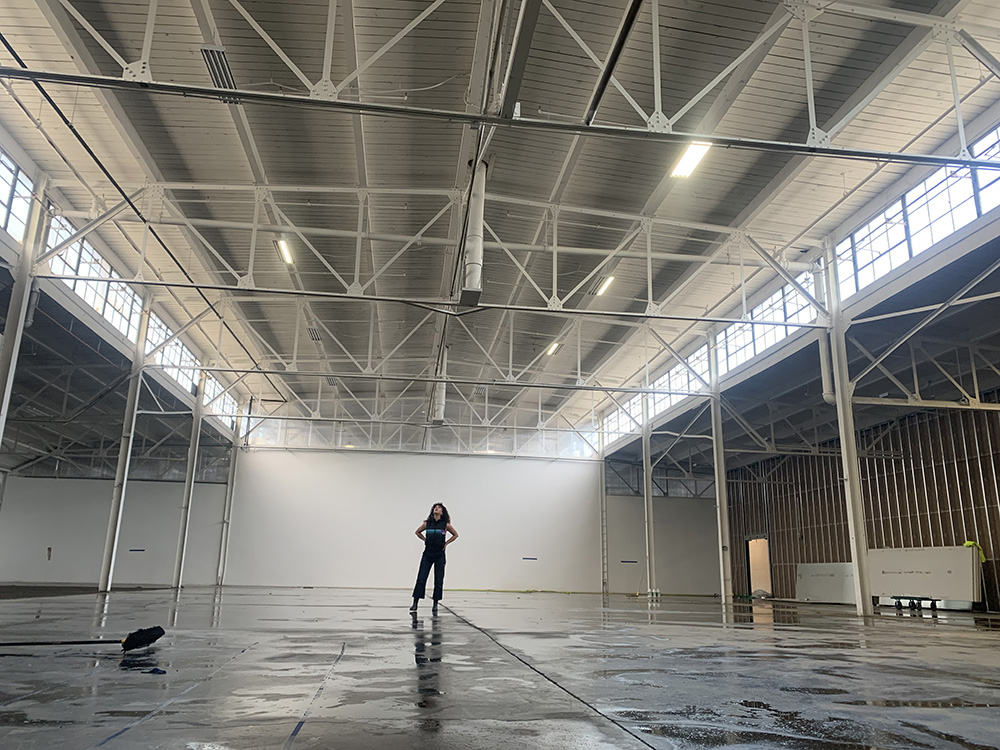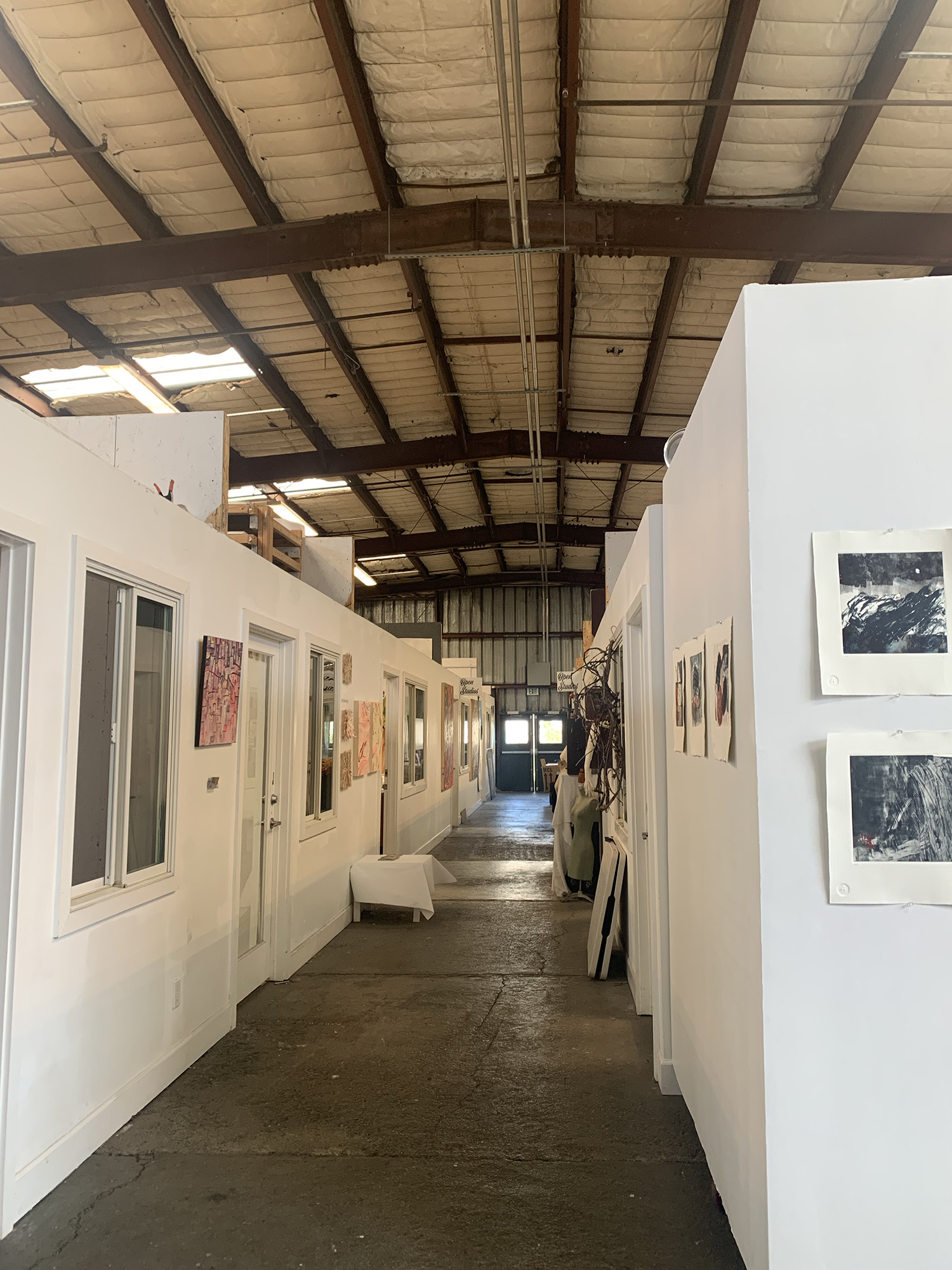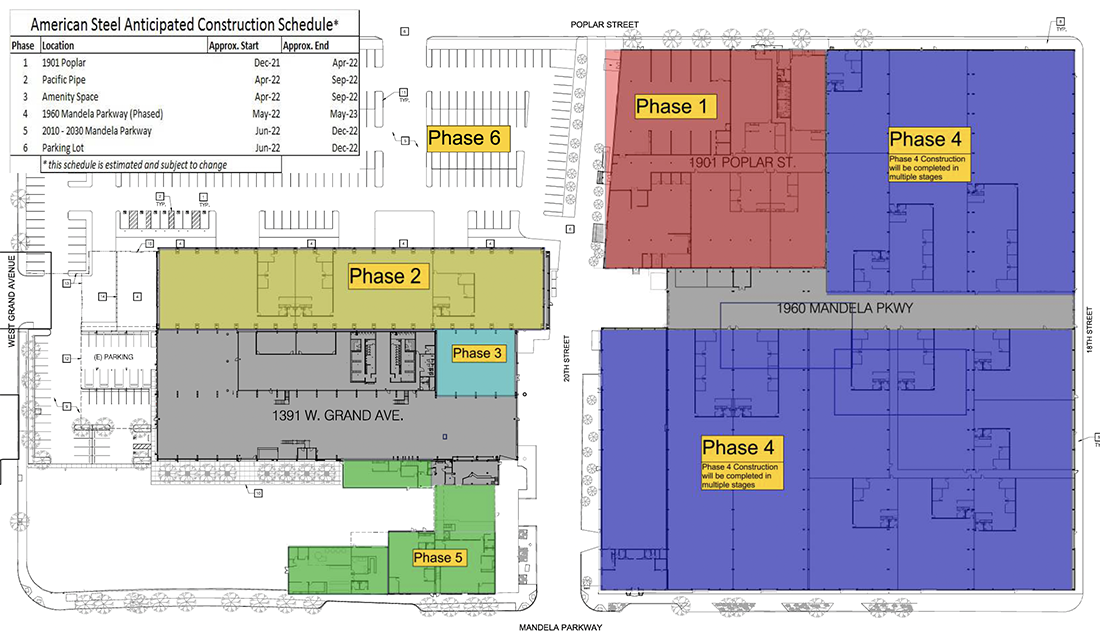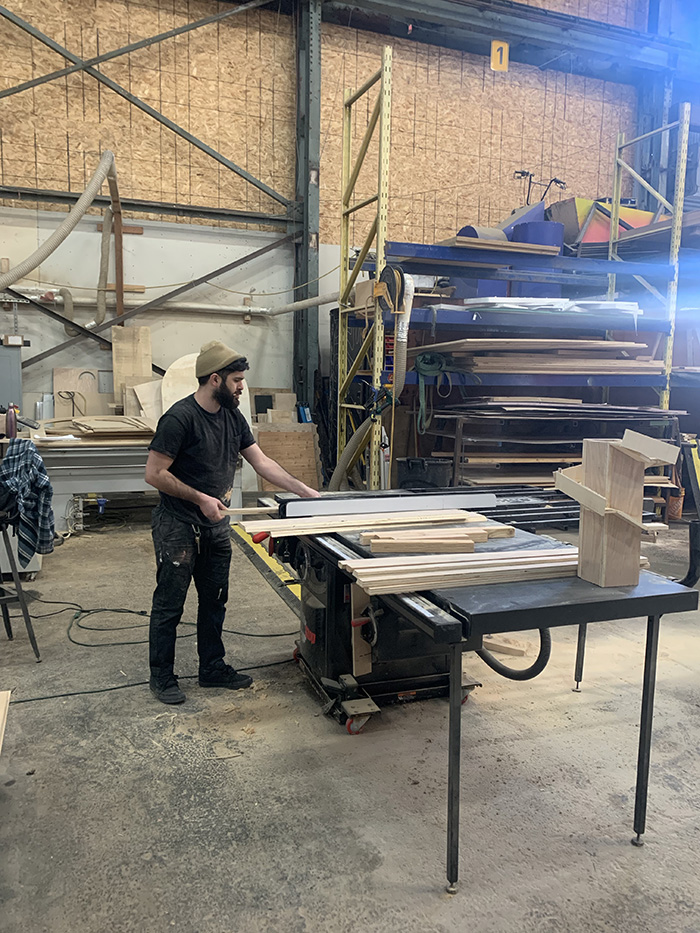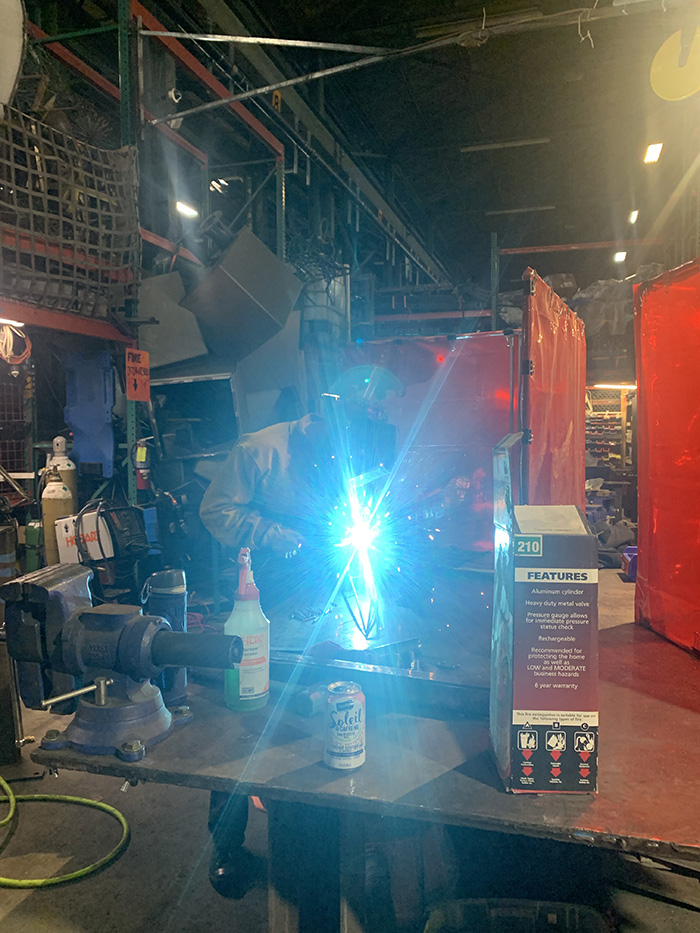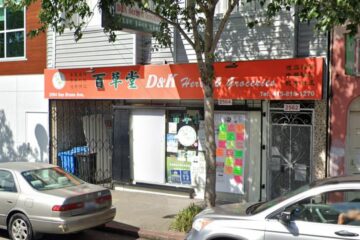American Steel Artists Speak About Billionaires Evicting Them
Just 5 years after being purchased by 11-West, one of our most vibrant and imaginative artist communities in Oakland will be emptied out by this summer. The community of large scale industrial artists, fabricators, builders, and makers at American Steel in West Oakland is readying themselves for an upcoming eviction. A Portland real estate developer (worth over 4 billion dollars) named ScanlanKemperBard (SKB) has been following through with a rolling eviction after they purchased the property in September for $82.5 million in an all-cash deal.
Seeing as there is very little discussion about this topic online in the media, I set out to first learn about the artists, their understanding of what is happening within the space and their plans for the future. This is just part one of the discussion:
We first have to acknowledge the complex feelings building up as artists within the American Steel community are starting to pack up and move their things out of the space. Tension, confusion, disappointment and anger are some of the feelings American Steel artists have surrounding their looming eviction. But the biggest emotions of all are sadness and defeat. Construction has been underway in vacated parts of the building. A daily reminder that there is change ahead for the space. Change that doesn’t include those who have so deeply loved and cared about the space for over two decades.
The fluff (aka press releases) written online about the purchase glazed over the existence of the artists – let alone the major impact that pushing artists out of this space will have on Oakland the Bay Area as a whole. Each of their press releases are dismissive and insensitive. In one article, SKB’s president Todd Gooding said, “This asset class has been our best performer in our portfolio during Covid.” “During Covid” he said – as if this company was looking specifically how to profit during a global pandemic.
SKB’s senior vice president, Gregory M. Scharlemann, added in another article, “This is an exciting redevelopment opportunity for SKB and the Oakland market. We’re already seeing strong interest from advanced manufacturing and R&D users during a short marketing period, reaffirming the demand and need for space like this in the Bay Area.”
When speaking directly to an artist, Scharlemann’s language has a much different tone than their company-approved press releases. Carolynn Haydu of Metal House Gallery wasn’t sure what her move out date would be so she called the number at the bottom of an email she received from SKB: a direct number to Scharlemann himself. When she spoke with him, his exact words to her – before she could even utter a single word – were “don’t get upset or freak out”. For the life of me, I just can’t imagine what this person is thinking to speak to one of their current tenants like that. Maybe he was caught off guard? Her reason for the call – just to know what’s next.
While the communication coming out of SKB in the press ignores their role in pushing out artists out of the space, artists themselves are left not knowing what to do next. It’s “just business” and since the sale is to a private business, the rights that these artists have are few and far between. SKB has been having “coffee and donut” meetings with the tenants to announce where they are at in their plans for construction. These meetings are the only time tenants can ask questions face-to-face with their new landlords. Since September, there have only been two of these in-person meetings.
According to Jane Dulay at Metal House Gallery, they don’t say they are evicted directly. She said that they are just stating that, once construction starts up in their prospective zones, they are expected to leave with all of their things. Although it’s spun to say folks just need to leave during construction, there is no solid promise surrounding bringing any artist back after construction is complete.
The exact move out date is unknown for most. Everyone I met with has a different idea as to when they may need to leave. Some say the end of May, some say sometime in May – I even heard someone say they may not have to leave until mid-summer (though that’s not guaranteed). What is known is that the full plan is based around a construction schedule which has rolling construction start dates. SKB is waiting for their permits to be approved by the city. Once approved, SKB will push harder to have artists leave the space. According to one artist, legally they only have to give them 15 days notice.
An anonymous source who is closer to members of SKB said there is talk within the company about offering new leases to some once construction is done. But when I asked artists about it they had a murky understanding of how that might work and/or when something like that would even happen. The rent will likely be much too high to even consider. A few mentioned to me they heard it would be at least $2 a square foot – though we couldn’t find a direct quote from SKB. That being said, construction plans for the larger spaces in the project are estimated to take up to a year. By then, the community hopes they will have settled into more permanent options.
Knowing their final notice to vacate could be as little as 15 days, tenants are already starting to pack up. A once thriving community, there are pockets of the building that are abandoned and barren. This is, yet another, transitional time for the building. Many people are just letting go. They feel it’s time to shift their focus towards a new space, a new city or a new project.
What came clear to me as I spoke to each artist I ran into while at American Steel, everyone still there is trying to sift through their choices. But without the clear information, the choices all feel muddied and depressing.
One (maybe obvious) known issue artists are facing is the cost of space in the Bay Area. “Big Jim” has been in the space for 16 years. He’s a Builder, a generalist in that he can do anything you need him to do – around the studio, he’s well known for being a guy that you can go to fix the unfixable. Welding, fabrication, go-to fixer of all things… you name it! When I asked him what he’s going to do he said he’s not sure yet. You see, the cheapest thing Jim has personally found is $1.56 per square foot. Which is more than twice what he already pays. For a 1,000 square foot space, which is likely too small for the amount of gear Jim has, it would be over $1,500 a month.
And while Big Jim can’t afford moving to a new place right now, other artists have been able to expand their business due to their time at American Steel. Nine and Eye is one of those businesses. Like many others, Nine and Eye moved to American Steel after moving out of another creative space which was pushed out of Oakland, Nimby. Talking to Kevin Espeche, he expressed how grateful he and his crew are for what being at Nimby and subsequently American Steel has meant for their company.
When they started Nine and Eye with their partners, they didn’t have the money to be able to afford a space on their own. Moving into American Steel meant they had access to a large space for their build-outs but also meant they had access to cranes and other vital tools needed to move their large projects and complete their work. As far as being ready to move, they are ready for something cleaner, bigger and have enough clients that they are ready to expand. Their future plans include moving to Miami at the end of the summer. They hope to work with SKB on a short-term lease to complete a current project but haven’t had much luck. Instead, they may team up with other artists moving out of the space but nothing is finalized yet.
Zoning is also muddying up the choices for artists looking for a new space nearby. While walking around American Steel the other day, I learned from Espeche of another interesting limitation that artists are coming across. More and more of the available warehouse space in Oakland has now been rezoned known as “Green Zone”. According to this interactive map, you can see that most of the industrial space in Oakland is now “green zoned” which allows for cannabis businesses to move in. This type of zoning change has decreased the amount of available spaces and rising rents to points that are unattainable to many in the American Steel community.
As a Bay Area native and artist myself, I think the biggest question I have is… what’s next for makers and builders in Oakland? What impact will the loss of this large maker space have on all of us? Countless times I have been told… “if you’re an artist, you should move to Oakland.” What’s the larger impact when these artists are pushed to the farthest corners of the Bay Area? While American Steel has always been the center of so much creativity and a space for people who are interested in alternative art forms, having the free peer-to-peer sharing between artists disappear from this space is something we can’t replace. It’s special. Something worth preserving.
Even recently, Ardent and Majorelle Arts had a robbery in their space. Their community rallied and raised over $7,000 in less than 2 weeks. A testament of how strong the communities built in these types of spaces have become. Connections are made when large numbers of people with similar interests and goals gather. People meet like-minded people and create deep connections which help lift each other up.
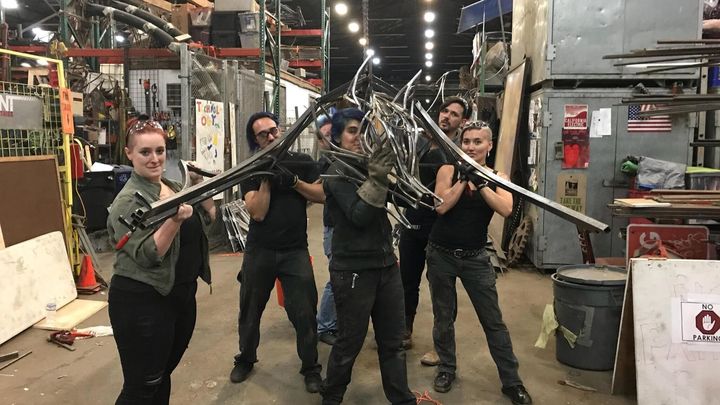
Group photo of Majorelle Arts taken from their GoFundMe after a robbery – photo by Julia Jerome
The loss of a larger community and its impact on each of them and also the arts in The Bay Area was a huge part of all of my conversations while speaking to folks at American Steel. One artist I interviewed, Gray Davidson, of Majorelle Arts, is passionate about the impact that losing these types of spaces has on communities. He said, “Every time an iconic creative space like American Steel disappears the fabric of the Bay Area’s art scene weakens. In addition to displacing dozens of individual artists and art collectives, dispersing these creators prevents critical community building and chance encounters that are foundational to a healthy arts culture.
If you want to see how a city loses its vitality, this is how it happens. American Steel has been a particular haven to industrial artists, especially those experimenting with atypical materials such as electricity and fire. Spaces that afford this work are increasingly rare and in their absence those arts do not simply shift a little farther out from the transit hubs, they sometimes do not find new homes at all.”
Which artist community-run spaces are still available if you’re into interactive art, fire art, learning to build something new, interested in metal fabrication or just get inspired by talking to someone about their next art project?
The following is a short list from Davidson and others – including only some of the spaces which have left and a short list of spaces that are still around and worth supporting:
Spaces that have disbanded or moved:
Vagabond Ballroom, Shipyard, Nimby, Cloud 9, The Infinitarium, CellSpace, Art360, The Trapp, Dovetail, Otherworld, Sons of Cayuga, Palace Theater, Octagon and many more.
Only some spaces that remain:
M0xy, Seaport Studios, Bridge, The Crucible, The Boxshop, Agapolis, The Vulcan Lofts, Lumen Labs, FlowSpace, Omni Commons, Radiance, Hunters Point Shipyard, 1890 Bryant Studios, Project Artaud, Humanmade, Noisebridge
BrokeAssStuart.com will continue to monitor the eviction story and bring you news as we have it. I have already reached out to SKB for their comments on the eviction and see if we can learn more about what steps they are taking to keep artists in the space, if any. So far, this story feels somewhat one-sided without their comments and point of view. Is this a David and Goliath situation or will they do something that will enrich the neighborhood and the community? Minimally, we’d love to see if anyone will be offered a renewal contract and when so that it gives artists something concrete as a next step.
Lastly, I want to thank the artists who were able to share their story with me and took time to talk about their complex feelings around this topic.


